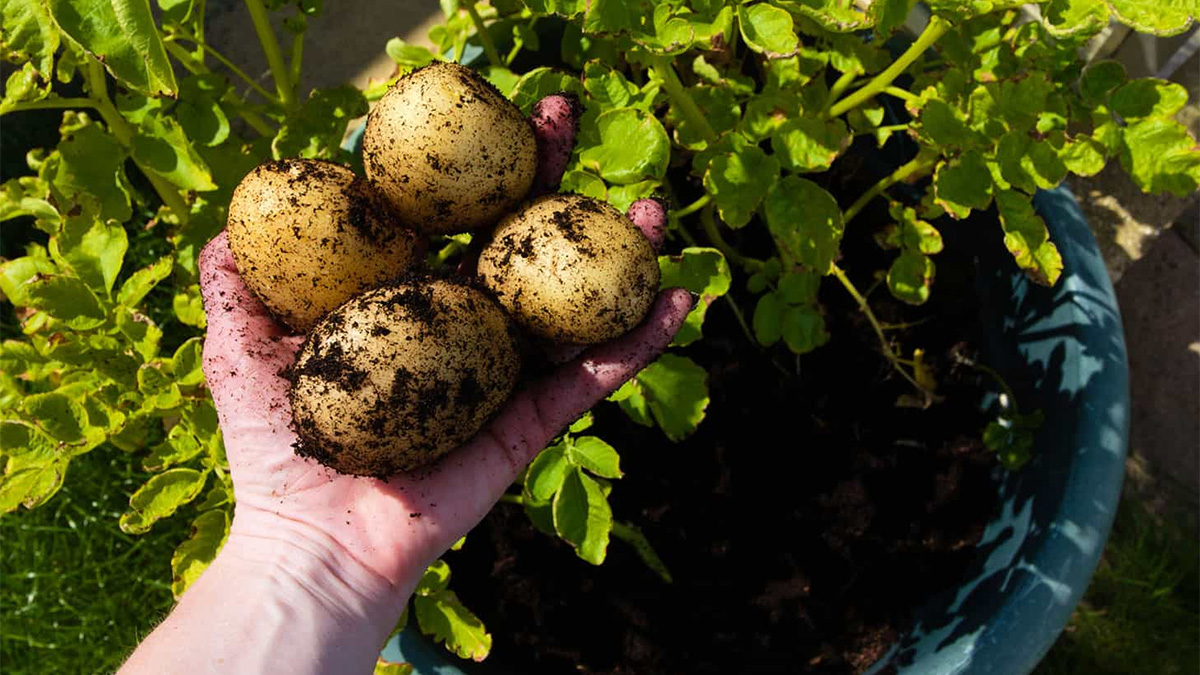Grow Potatoes the Easy Way – Even in Small Spaces

You don’t need a big backyard to enjoy a generous harvest of homegrown potatoes. With the right approach, even small spaces like patios, balconies, or porches can yield a rewarding crop. Growing potatoes in containers is not only simple but also a great way to make the most of your gardening space.
Why potatoes are perfect for container growing
Potatoes are an excellent option for gardeners working with limited space. You don’t need a large backyard or raised bed to enjoy a plentiful harvest. With the right setup, these versatile tubers can thrive in buckets, grow bags, or even old storage bins.
Container growing also allows for better control over soil conditions and drainage, reducing the chances of disease. This makes them ideal for urban gardeners or renters who want to grow their own food without committing to permanent garden beds.
Choosing the right potato variety
Not all potatoes perform equally well in containers. For small spaces, early and mid-season varieties are the best choices. These types mature quickly and are generally less demanding in terms of space and time.
Some reliable varieties for containers include Yukon Gold, Red Norland, and fingerling potatoes. They tend to have compact growth habits and deliver a satisfying yield with proper care.
Picking your container and soil
The container you choose should hold at least 10 gallons of soil and have ample drainage holes. Fabric grow bags are a popular option, but you can also repurpose items like food-grade buckets or laundry baskets.
Use a soil mix that combines compost with quality potting soil. Avoid heavy garden soil, which can compact in containers and hinder root development. A light, fluffy medium promotes strong growth and healthy tuber formation.
How to plant your seed potatoes
Start with certified seed potatoes to minimize the risk of introducing disease. If your seed potatoes are large, cut them into chunks with at least one eye on each piece. Allow them to dry for a day or two to form a protective callus over the cut surface.
Plant the seed pieces with the eyes facing upward, spacing them about 6 inches apart in the container. Cover with 3 to 4 inches of soil, and be ready to add more as the plants grow.
Hilling up as the plants grow
As shoots emerge and reach 6 inches tall, begin the hilling process. This involves adding more soil or compost around the base of the plants to keep the developing tubers well-covered.
Repeat this step every time the foliage grows another 6 inches, continuing until the container is nearly full. Hilling prevents tubers from being exposed to sunlight, which can cause them to turn green and become bitter.
Watering and feeding your plants
Container-grown potatoes dry out more quickly than those in the ground, so regular watering is essential. Aim to keep the soil consistently moist but not soggy. Check the top inch of soil daily during warm weather.
Feed your plants with a balanced, slow-release fertilizer when planting, and consider supplementing with compost mid-season. Avoid overdoing it with nitrogen, which can result in lush foliage but fewer potatoes.
Signs your potatoes are ready to harvest
Potato plants begin to yellow and die back once they’ve finished their growing cycle. This is your cue that harvest time is near. For early varieties, this typically occurs around 70 to 90 days after planting.
Gently dig into the soil to feel for mature tubers. Use your hands or a small hand fork to avoid damaging the potatoes. Once harvested, let them cure in a cool, shaded area for several days to toughen their skins.
Tips for storing your homegrown potatoes
After curing, brush off any clinging soil without washing the potatoes. Store them in a cool, dark, and well-ventilated area, ideally at temperatures between 40 and 50 degrees Fahrenheit.
Avoid plastic bags or airtight containers that can trap moisture and cause rot. Paper bags or ventilated crates work well. Properly stored, your potatoes can last for several months and stay fresh for meals throughout the season.
Conclusion
Container-grown potatoes prove that a small footprint can still produce a big harvest. By choosing the right variety, providing consistent care, and following a few simple techniques, you can enjoy fresh, homegrown potatoes no matter how limited your space.
